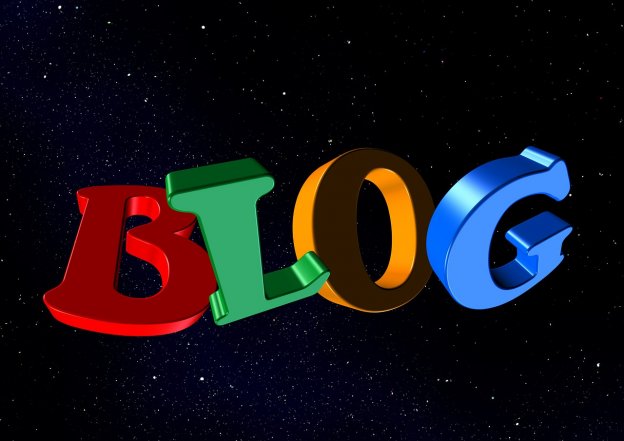When you write a blog (or article) you need to be writing for two audiences – your human readers and the search engines. There is no point in having a good article if no one can find it, which makes playing to the search engines vitally important.
In this short article I will present 6 top tips to a successful blog by showing you how to hit the search engine buttons. Others have written entire blogs on each of our tops tips, making this just an introduction
1. Topic and titles
It goes without saying that you need an interesting topic and a title from the get go. You also need to think about the keywords and phrases you are going to use in the article and these need to be peppered sensibly across the various elements in the blog.
There are a number of headline types that work well and are described in more detail by Hostgator:
- Number headlines – Any headline that starts with a number, introducing a list post (like this one does – and it worked in this case if you’re reading this post).
- How to headlines – This is a simple option, but a good one. If someone’s trying to figure out how to do something, a headline that lets them know the blog post will deliver on that need gets the most important point across (but your post better deliver on the headline’s promise).
- Famous comparison – These headlines borrow on the popularity of a person or piece of entertainment to get people to click. Depending on the famous thing or person you choose, they can add an element of fun to your blog, e.g. # Business Lessons I Learned from Watching Beyoncé
- Scarcity headline – This headline promises that the reader will be getting something few people have. Headlines that start with “The Secret of…” or “Little Known Tips for…” are playing on this principle.
- Big promises headline – These headlines are assuring the reader that they’ll be getting a lot of information if they click, this category includes headlines that start with “The Ultimate Guide to…” or list posts that have a particularly high number at the beginning.
Subtitles should be nested below headings
WordPress comes with a set of standard titles – Heading 1, heading 2, heading 3 etc. The search engines look for these sub titles to help them index and navigate content. It therefore makes sense to use headings that are informative to readers and search bots. Heading 1 is is the blog title and should only be used once in a blog. Other headings can be used multiple times but should be nested – for example a heading 3 nested under a heading 2.
2. The blog URL or page address
Try and bring the title of the blog through to the URL of the page. For example, this blog is called 6 top tips to a successful blog and the page url is 6-top-tips-to-a-successful-blog.
The WordPress websites that we support offer a facility to enter URL of the blog page. After you enter the blog title, and just below the title box, is a facility called “Permalink:…..” Although the platform will automatically suggest a page URL or permalink, you are able to select one that better fits your title.
3. Content is king
Write for target users with language they will appreciate. A personal approach often works better – so use “you” and similar words where appropriate. Remember to write about what your readers want to hear, rather than simply what you want to tell them. Content also needs to be written for the search engines with appropriate use of the keywords you selected earlier both in the content and headings.
Ideally you should be writing sentences of less than 20 words and using an active voice. Sentences should be group together into paragraphs with more than 2 sentences and of less than 200 words to a paragraph.

4. More is better
According to many studies over the last 10 years – Google’s algorithm prefers more content, when going head to head on shorter content posts – helping blog posts with over a 1,000 words do better on average – and driving up the average significantly. At a minimum blog posts should have 300+ words, so that they aren’t considered ‘thin content’ on your website. Tim Brown’s (from the Hook Agency) research considers the best blog length for SEO in 2019 is 1,705 Words. So don’t be shy – get writing.
5. Images really enhance your content
Images help to make your articles interesting and we all know that “a picture tells a 1,000 words”. Google search is aware of this and Google image search is becoming more important. So here are some tips on making images count:
Tagging images
There are several places where metadata about an image can be recorded and these should make good use of the keywords or phrases that you have picked for the article. The following bits of meta data can be added in the Media section of a WordPress site when an image is uploaded – or in fact at any time.
- The file name: Image SEO starts with the file name. You want Google to know what the image is about without even looking at it, so use your focus keyphrase in the image file name. If your image shows a sunset in Barbados, the file name shouldn’t be IMG4536.jpg, but sunset-in-barbados.jpg
- The alt text (or alt tag) is added to an image so there will be descriptive text in place if the image can’t be displayed to the visitor for any reason and for the visually impaired who use screen readers. Add alt tags to every image and ensure its short, descriptive and includes key phrase for that page. For example: a beautiful sunset in Barbados.
- Captions: The image caption is the text that accompanies the image on the page — it is often the text that appears below an image on a page of text.
Image format and size
There are differing image formats to be used for different purposes:
- JPEG for larger photos or illustrations: it will give you good results in terms of colours and clarity with a relatively small file size;
- PNG if you want to preserve background transparency;
- WebP instead of JPEG and PNG. It will produce high quality results with smaller file sizes. You can use tools like Squoosh to convert your image into WebP.
There’s a compromise to be had in quality of image versus the time the site takes to load. Although WordPress will optimise the size of an image it takes time to do this – the closer you can get the size of an image to its presentation size the better. We suggest:
- Full width image should be no greater than 1,500 pixels
- A half width image no greater than 800 pixels
6. Include links to other content
Google evaluates content on a page by page basis, but it does want to see how content and sites are connected. The search engines look for links between pages on a website and also links to a page from other sites. For example, I have linked this page to our blog “4 Stages to an effective Website” blog and to our main website page. To add a link in a WordPress site:
- Go to the page you want to link to, highlight and copy the URL in the navigation bar;
- Highlight the piece of text in the blog where you wish to insert the link;
- Click on the “chain link” icon in the text editor;
- Paste in the URL you wish to link to
- Click on the gear wheel and tick “open link in new tab” box, and finally
- Click “Add link”
Quite a lot to think about as you start writing your latest article. We equip our websites with Yoast SEO – so head over there to learn more about what you need to do to keep you content discoverable.

